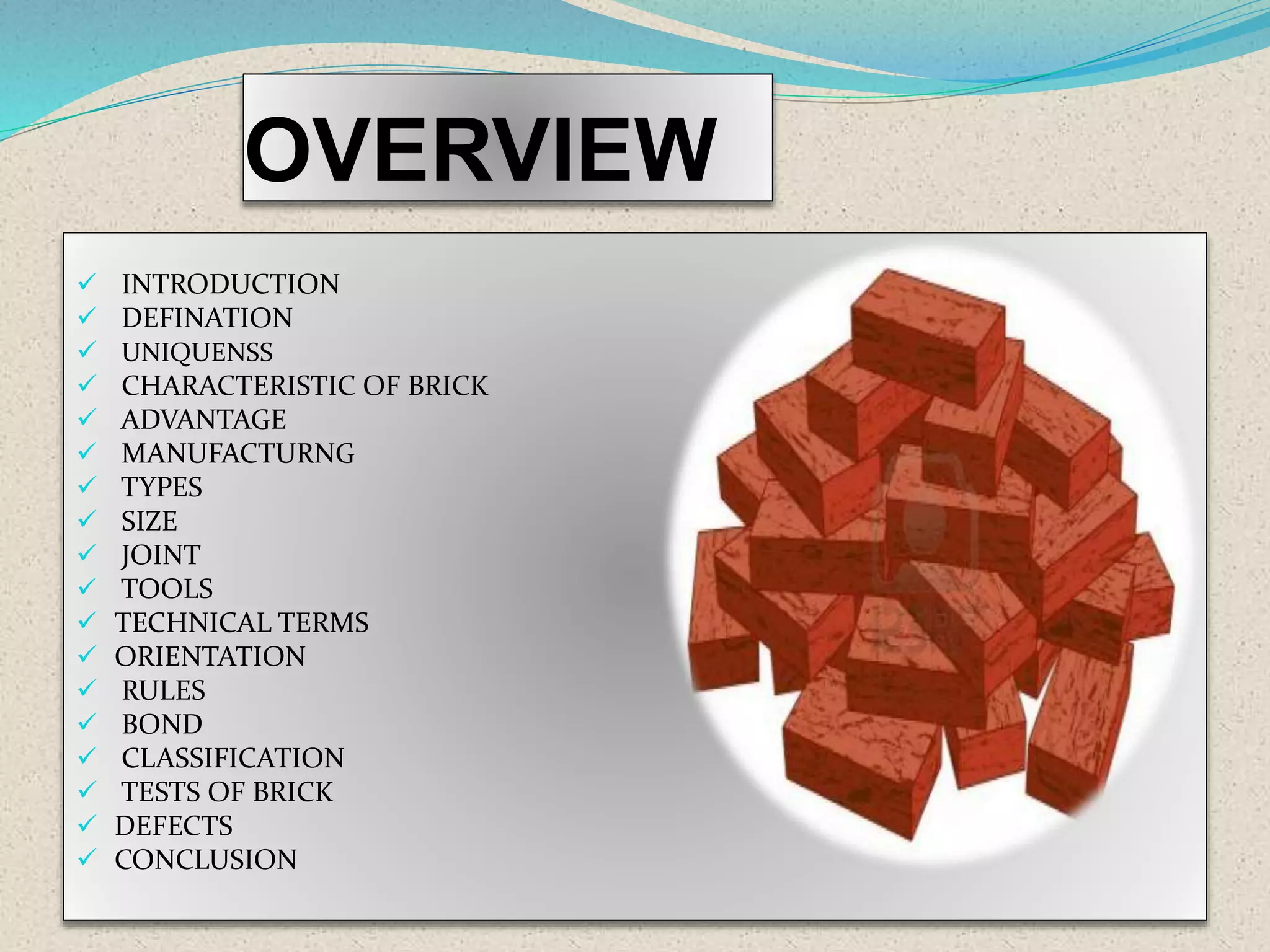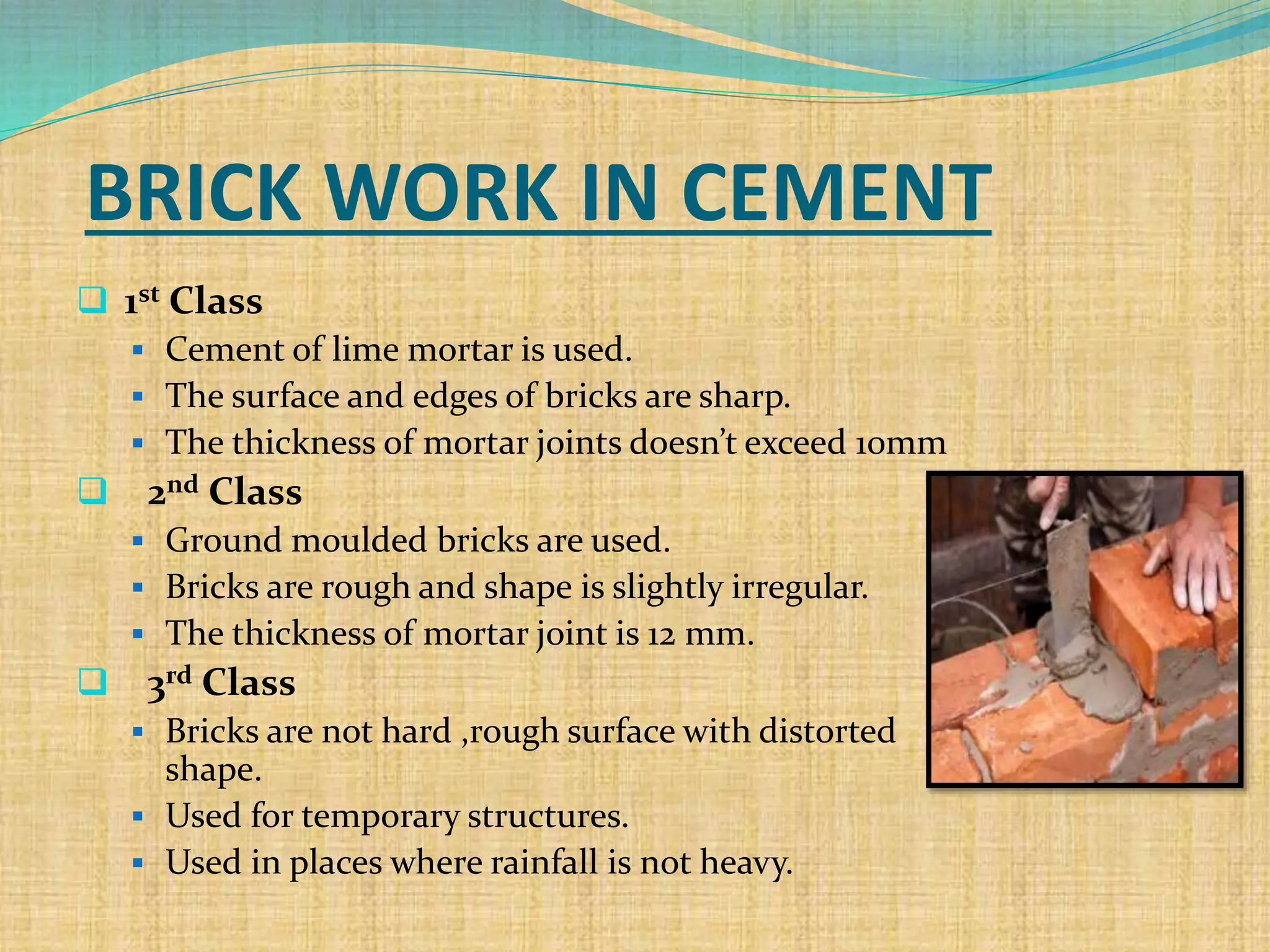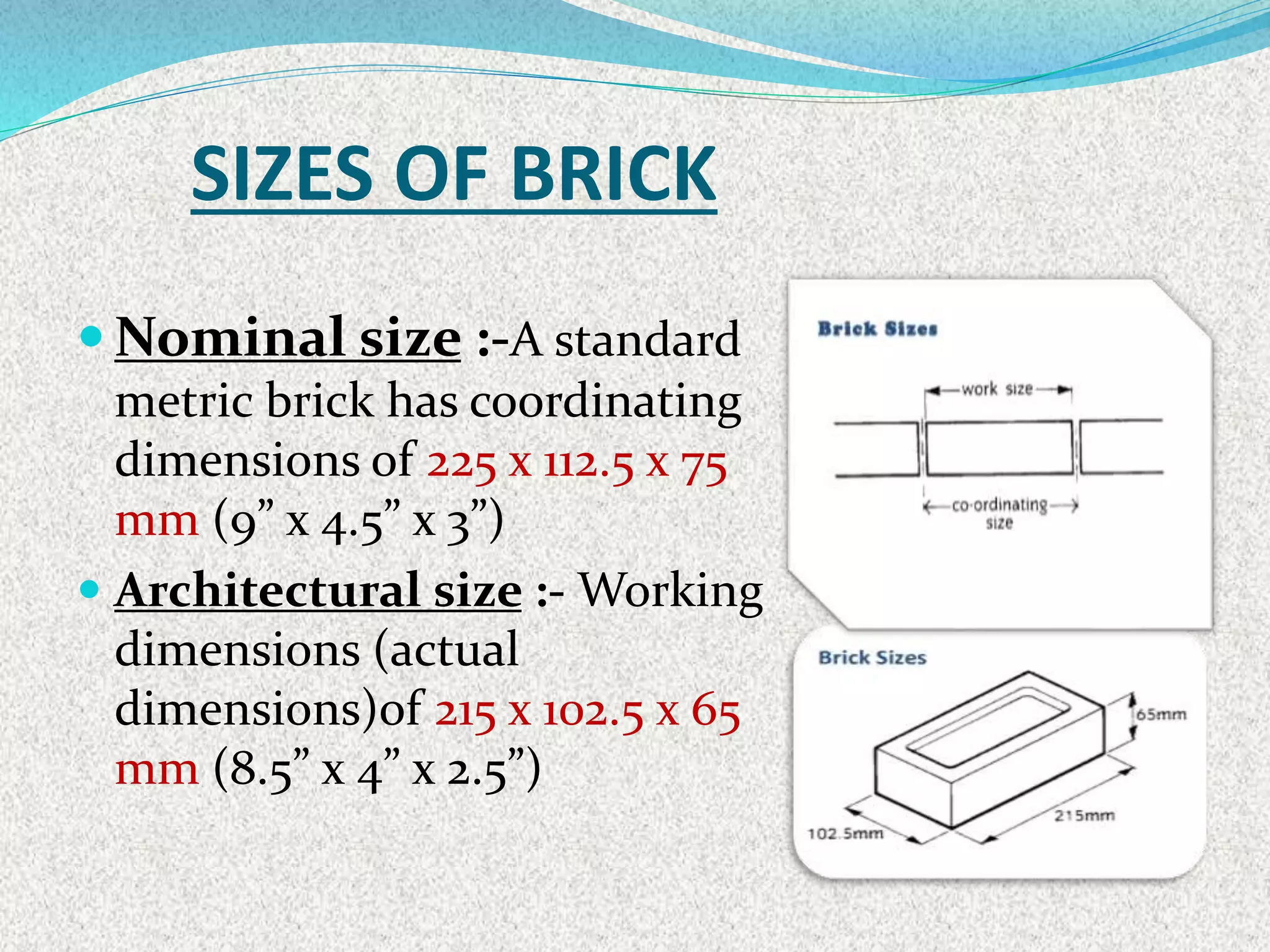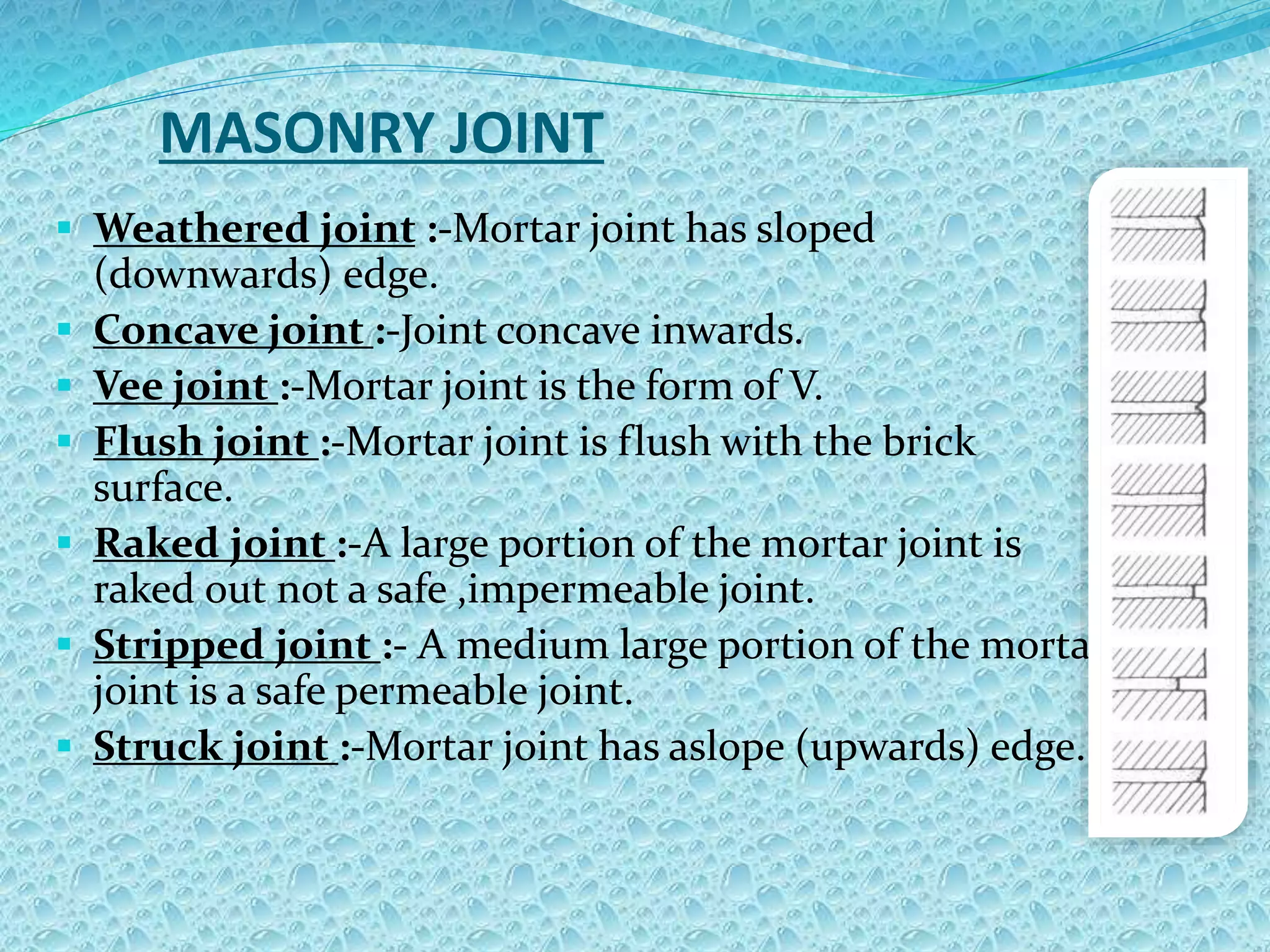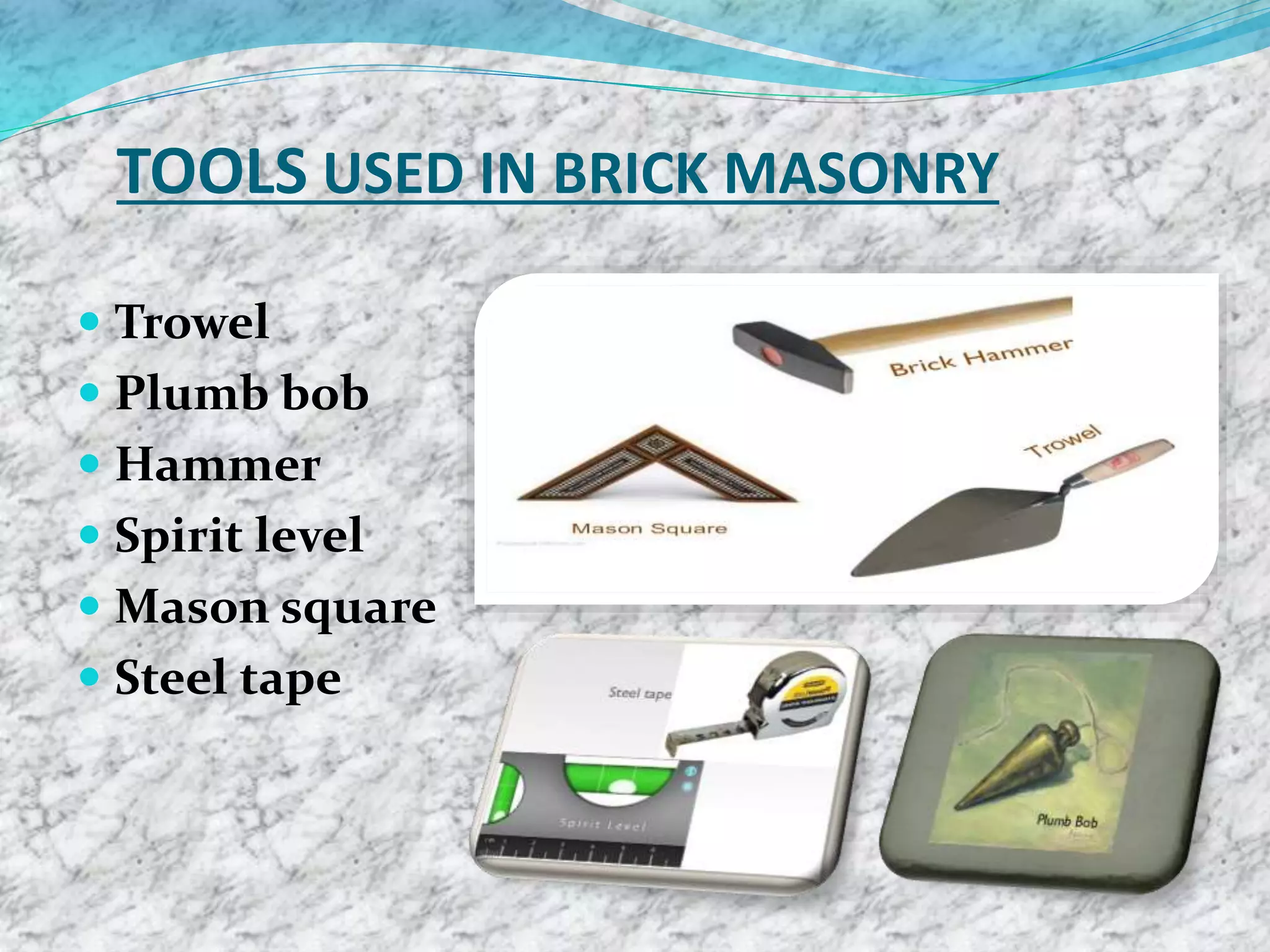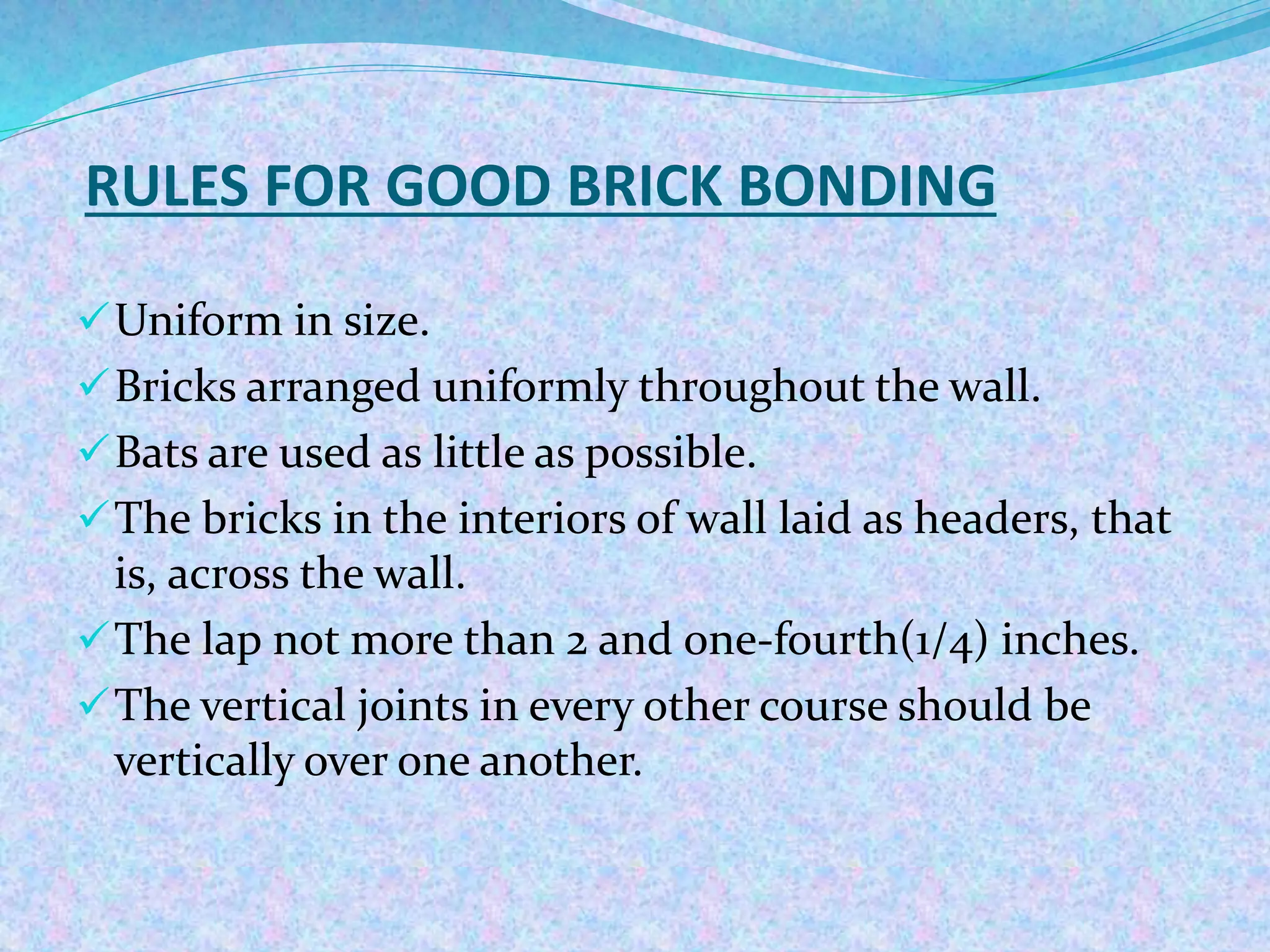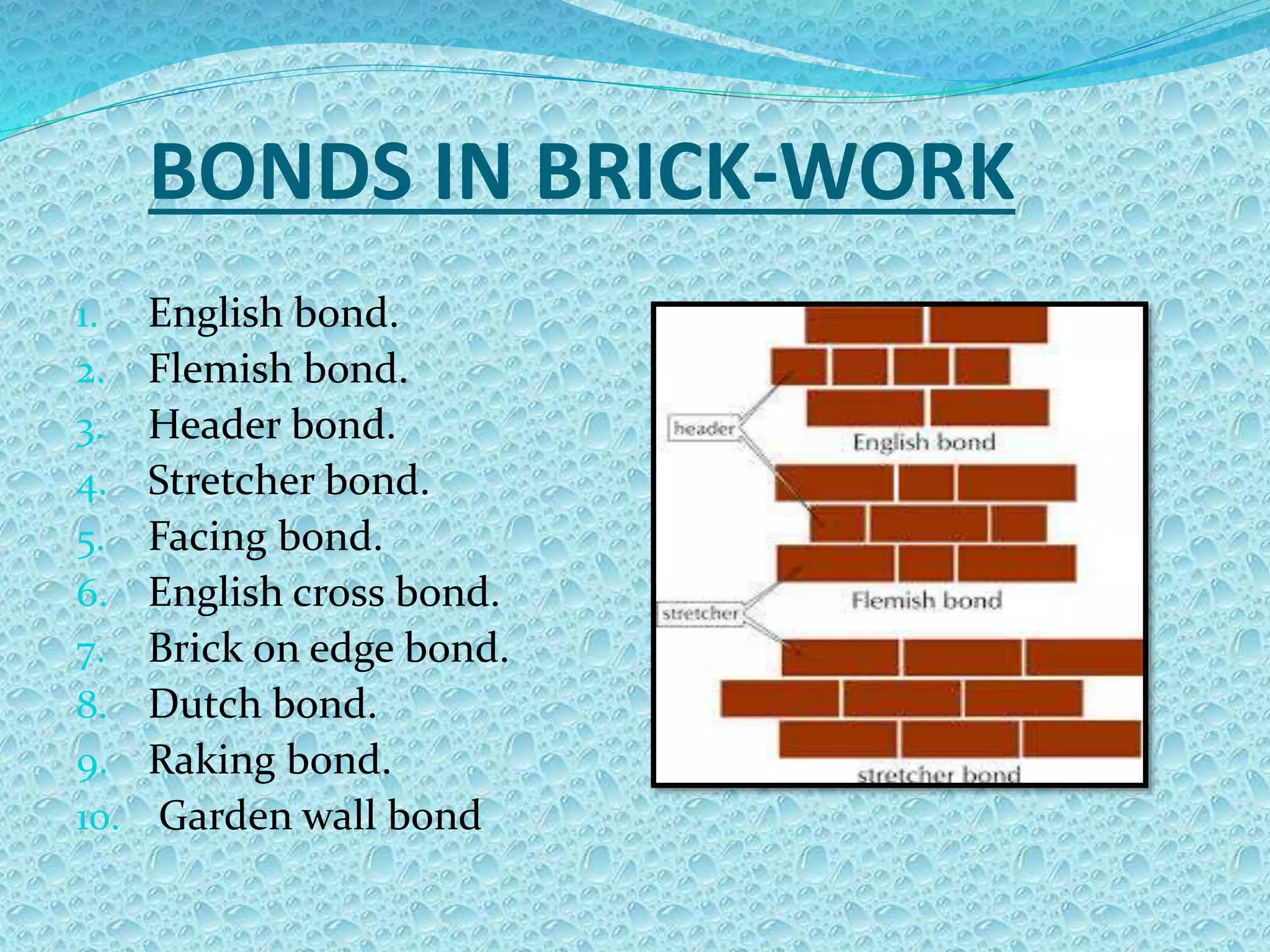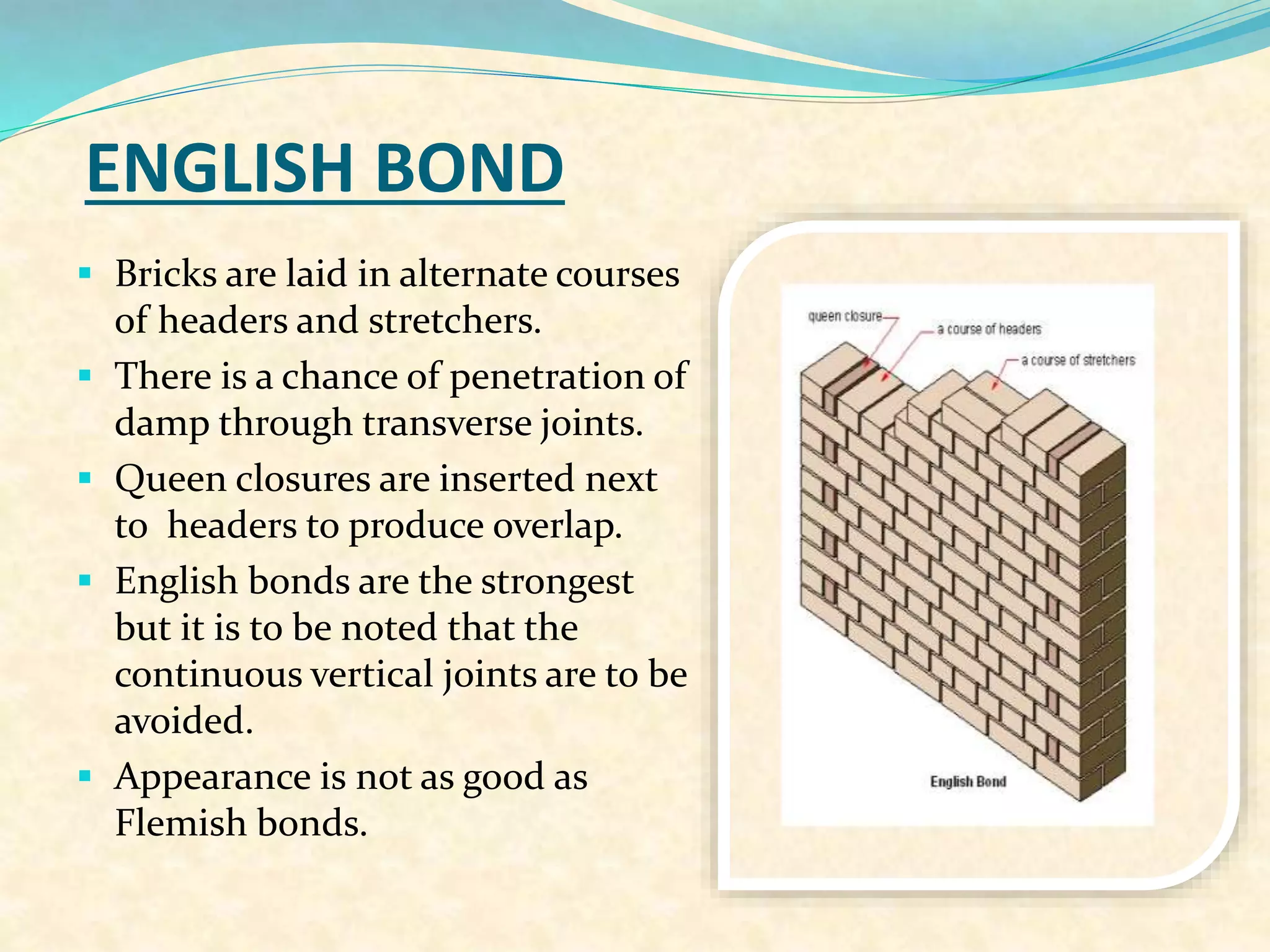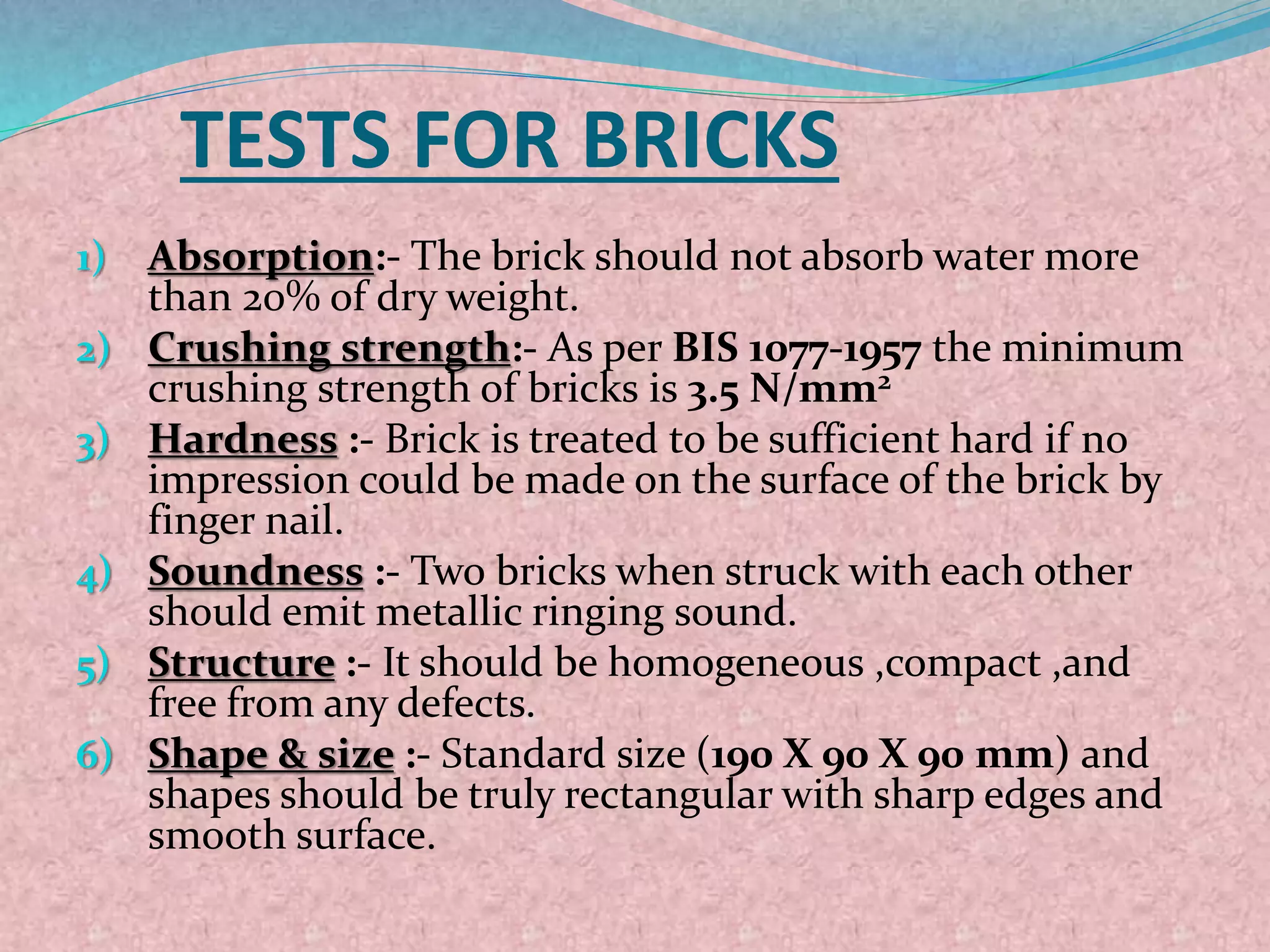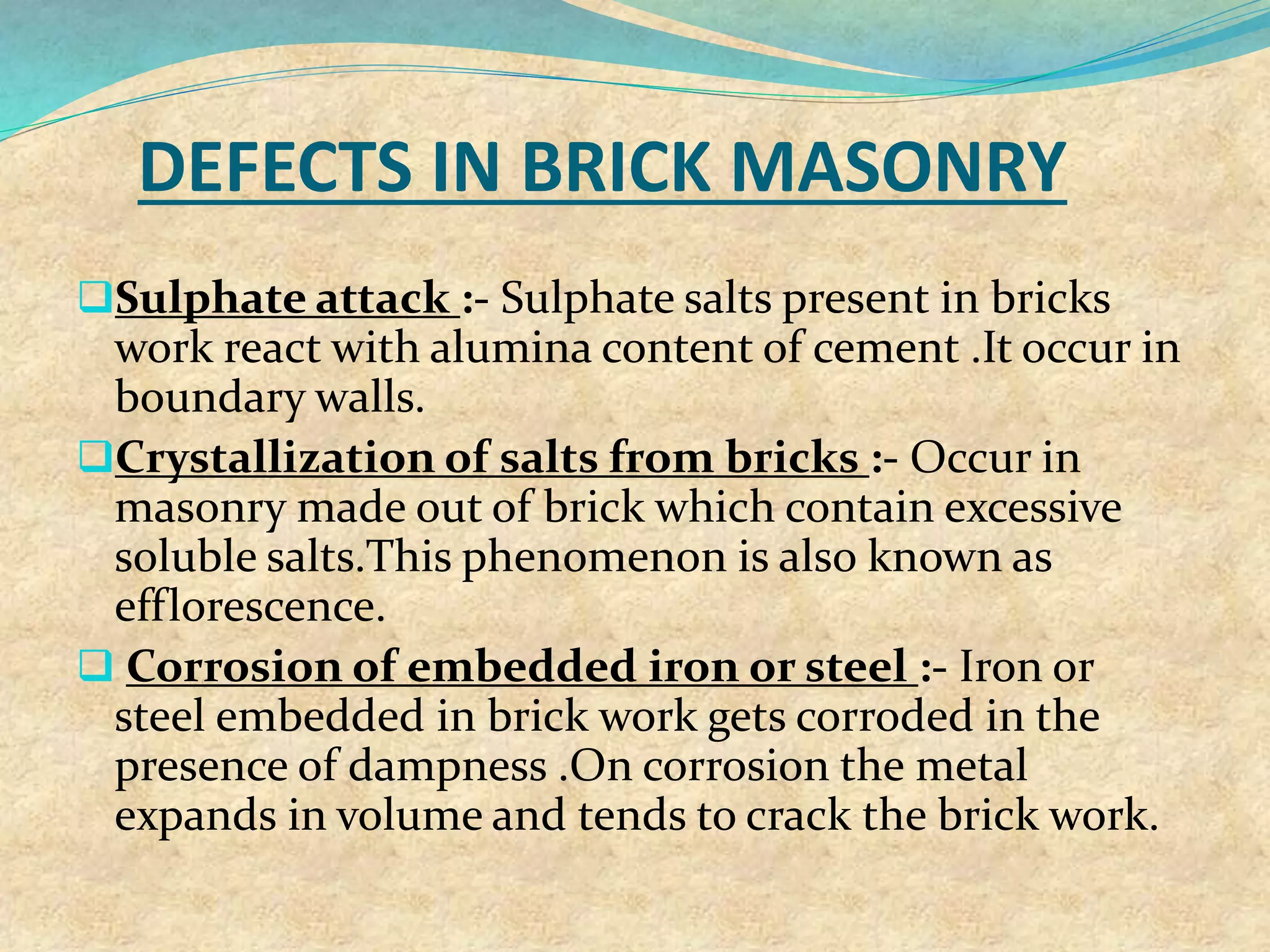Brick masonry involves laying bricks together using mortar. Bricks are laid in various bond patterns with headers and stretchers. English bond and Flemish bond are common, strong bonds. Brick masonry walls are durable and fire resistant due to the thermal mass of bricks. Proper bonding, jointing, and avoiding continuous vertical joints are important for strength. Bricks are classified based on quality and used for different purposes depending on loads and importance of structure.

